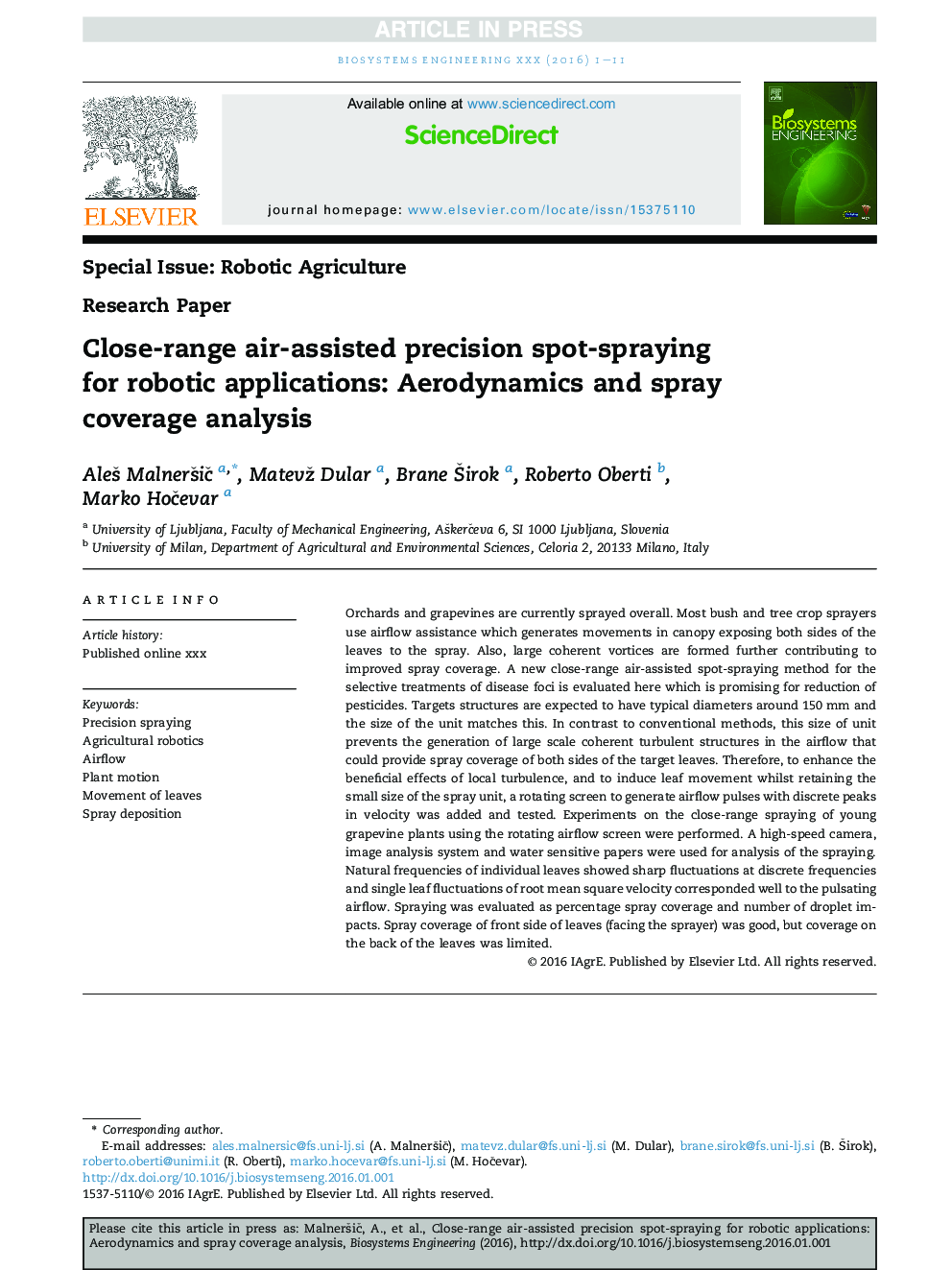| Article ID | Journal | Published Year | Pages | File Type |
|---|---|---|---|---|
| 8055144 | Biosystems Engineering | 2016 | 11 Pages |
Abstract
Orchards and grapevines are currently sprayed overall. Most bush and tree crop sprayers use airflow assistance which generates movements in canopy exposing both sides of the leaves to the spray. Also, large coherent vortices are formed further contributing to improved spray coverage. A new close-range air-assisted spot-spraying method for the selective treatments of disease foci is evaluated here which is promising for reduction of pesticides. Targets structures are expected to have typical diameters around 150Â mm and the size of the unit matches this. In contrast to conventional methods, this size of unit prevents the generation of large scale coherent turbulent structures in the airflow that could provide spray coverage of both sides of the target leaves. Therefore, to enhance the beneficial effects of local turbulence, and to induce leaf movement whilst retaining the small size of the spray unit, a rotating screen to generate airflow pulses with discrete peaks in velocity was added and tested. Experiments on the close-range spraying of young grapevine plants using the rotating airflow screen were performed. A high-speed camera, image analysis system and water sensitive papers were used for analysis of the spraying. Natural frequencies of individual leaves showed sharp fluctuations at discrete frequencies and single leaf fluctuations of root mean square velocity corresponded well to the pulsating airflow. Spraying was evaluated as percentage spray coverage and number of droplet impacts. Spray coverage of front side of leaves (facing the sprayer) was good, but coverage on the back of the leaves was limited.
Related Topics
Physical Sciences and Engineering
Engineering
Control and Systems Engineering
Authors
AleÅ¡ MalnerÅ¡iÄ, Matevž Dular, Brane Å irok, Roberto Oberti, Marko HoÄevar,
